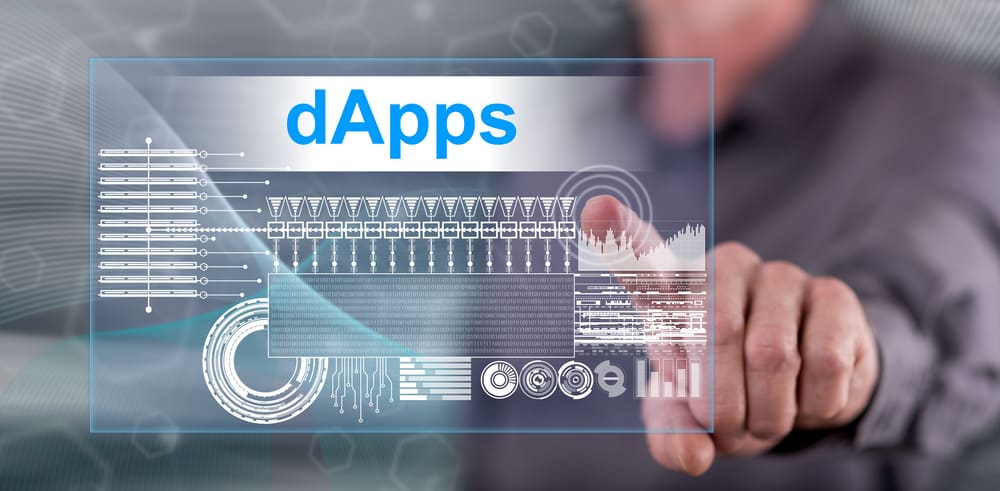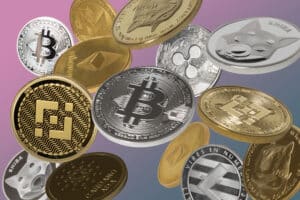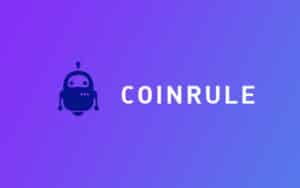Decentralized applications (dApps) are programs that run on a peer-to-peer network of computers. This network is referred to as a blockchain. They are decentralized, meaning they are not under the direct control of any one organization or individual.
Ethereum is the second-largest cryptocurrency in the world in terms of market capitalization, staying only behind Bitcoin. Notably, it was the first platform to enable dApp creation. Currently, there are over 2800 dApps on the Ethereum blockchain.
However, Ethereum is an open-source network and thus contains many experimental projects and even outright scams. It is important that you do your research before investing in any dApp.
Ethereum DApp rankings
State of the DApps, a re-known crypto app tracker, ranks dApps on the Ethereum network by the number of users, transaction volume, and user activity. By the first week of September, these were the top 10 dApps on the platform.
- OpenSea
Essentially, OpenSea is a marketplace for Non-fungible tokens (NFTs). An NFT is a digital collectible artwork that can be purchased, giving the buyer sole ownership rights. Like art, anyone can obtain copies of the NFT, but only the buyer owns the original artwork.
On the Ethereum blockchain, there are several dApps that facilitate the creation and trading of NFTs like Super Rare, Crypto Dynasty, and Crypto Kitties. Any NFTs obtained from these other platforms can be traded on the Open Sea. By creating a single marketplace, buyers can get better prices from the variety of vendors on this platform. The downside of using Open Sea is that it charges exchange fees, which may cut into an investor’s profits.
- Tether
Tether is a digital currency that carries the value of major currencies such as the USD, euro, or Chinese yuan. In other words, it converts the fiat into a digital currency. Every Tether token or the USDT is one-to-one pegged to the USD. Therefore, 1 USDT= 1 USD. After conversion from fiat, the issued tokens can be used as any other cryptocurrency or converted back to their cash equivalent. The advantage of this is it enables digital transactions in denominations most people are already familiar with.
- Oasis
Oasis is the frontend to the Maker protocol, another Ethereum dApp. Maker is a decentralized finance (DeFi) lending platform that enables users to borrow cryptocurrencies. On this platform, users can deposit crypto assets as collateral and borrow Dai tokens. By design, each Dai token is worth one USD.
To create Dai, users deposit cryptocurrencies onto the platform under a smart contract. Smart contracts are self-executing programs embedded into the platform to ensure transaction transparency and security. Once converted to Dai, each token has a stable value. Thus, no fluctuations are present throughout the transaction period. Such a stable cryptocurrency is called a stablecoin. Once the user pays off their Dai loan plus any additional charges, they get back their initial crypto assets.
- Chainlink
Chainlink (LINK) is a token used to run the decentralized Chainlink network of oracles. This network allows smart contracts to connect to external data sources.
The idea behind Chainlink was to incentivize computers worldwide (nodes) to provide the network with accurate data. This data may include prices of different assets, information on the weather, location data, and the like. The LINK coin is used to pay for services on the network and as an incentive to nodes to provide accurate data.
- Uniswap (UNI)
UNI is an Ethereum token used to run Uniswap, an autonomous liquidity provider that facilitates the exchange of Ethereum tokens. Created in 2018, Uniswap became the first Automated Market Maker of its kind.
In traditional moneymaker models, order books match bids and asks to set the exchange prices in the market. In the Uniswap Automated Market Maker model, users submit their tokens to liquidity pools, and an algorithm sets exchange prices. Anyone can supply and trade tokens in this liquidity pool. Users can also create their own tokens using the ERC-20 protocol by Ethereum and submit them into the pool.
- Decentraland
Decentraland is a virtual reality gaming platform that is basically a virtual world. On it, users can enjoy content and applications or create their own and monetize them. Using the Decentraland (MANA) coin, users can buy virtual land and other goods and services in the virtual world.
- Plasma Finance
Plasma finance is a DeFi platform that offers one-stop-shop decentralized finance services. On the platform, users can invest their tokens, store them and manage them. It offers services such as portfolio management, liquidity pools, lending, and borrowing and enables swapping of any crypto assets.
- SingularityNET
SingularityNET is a decentralized AI network that allows its users to create and trade AI services. The project was launched in December of 2018, essentially bringing together a global network of AI algorithms and services to provide AI solutions.
- Status
Launched in early 2016, this dApp is primarily a private and secure communication tool. In addition to offering its users a peer-to-peer messaging platform, it features a crypto wallet and a secure browser. This way, you can chat securely on the platform, bank any crypto assets in your Status wallet, and browse without leaking your data to marketers. Further, the Status browser is Web3 enabled, which means it is capable of interacting with dApps in addition to functioning as a normal browser.
- Lido
Lido is an Ethereum staking platform. Staking, just like mining, is whereby ETH holders choose to participate in transaction validation, and in return, they earn rewards. On Lido, users can stake any amount of ETH without necessarily having to go through staking infrastructure or losing liquidity of their ETH.
Once you stake your ETH on this platform, you receive stETH in return. You can use these stETH tokens within Lido and other compatible DeFi platforms. Once transfers are enabled on the Ethereum 2.0 blockchain, users will be able to redeem their stETH back into ETH.
Conclusion
DApps are slowly gaining traction and popularity as more and more people embrace a digital economy devoid of government control. Using dApps, people can create and trade digital art, get quick loans and other financial solutions, trade cryptocurrencies, and even play virtual reality games. There are thousands of dApps in the market today, but the aforementioned are the top 10 dApps in 2021 on the Ethereum blockchain.



